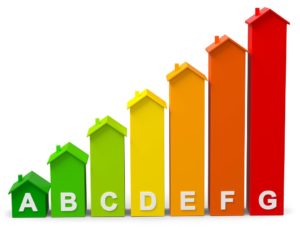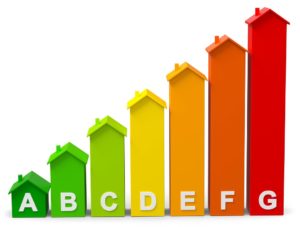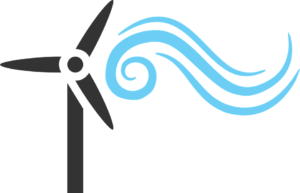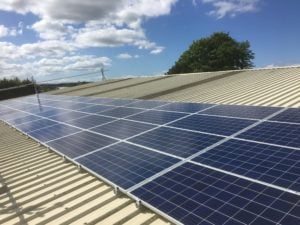- Home
- Kellihers News & Updates
- Renewable Energy Solutions for Ireland

Renewable Energy Solutions for Ireland
If you’re in the electrical business you’re no stranger to the concepts of sustainability and renewable energy. Renewables are big news, and big business.
Ireland is committed to achieving an EU target of delivering 16% of its total energy requirements through renewable energy technologies by 2020. To help meet that target the government has a number of incentives to encourage large and small scale renewable energy projects across the country, including incentives to incorporate renewable solutions into new-build and renovation projects for residential and commercial premises.
Opting for renewable and sustainable energy solutions isn’t just about meeting targets though. Renewable energy solutions are maturing rapidly, are increasingly cost effective to install and commission, are relatively low maintenance and deliver significant cost benefits over their serviceable lifetime.
The rising profile of renewable energy, combined with maturing technologies and government based incentives, is driving demand for renewable energy solutions in Ireland. That presents an opportunity for you to help clients make informed decisions about their renewable energy options, and to deliver efficient and effective renewable energy solutions.
Reduce energy consumption first
 Reducing the amount of energy we use in our homes and businesses can offer significant savings on their annual energy bills. Collectively adopting energy efficient technologies also has a crucial role to play in improving Ireland’s overall energy performance and meeting our international emissions targets.
Reducing the amount of energy we use in our homes and businesses can offer significant savings on their annual energy bills. Collectively adopting energy efficient technologies also has a crucial role to play in improving Ireland’s overall energy performance and meeting our international emissions targets.
Optimising the energy efficiency of any premises before making the transition to renewable energy solutions ensures your clients can make the most effective use of the energy they generate.
Helping clients choose and install modern, energy efficient lighting, heating and home automation solutions is a quick win for you, for them and for the environment… and it paves the way for more efficient and effective use of renewable energy in the future.
Look for these and other energy efficient options at your local Kellihers branch:
- LED Light fittings and bulbs from Philips, Robus, LUG and others
- Intelligent lighting and heating control systems
- Far Infrared Heaters from Herschel
- Home Automation options from Nest and Energenie
Choosing the right Renewable Energy option
Switching to any renewable energy technology requires careful thought and planning. Here are some things to consider when investigating renewable options for your clients.
Perform an audit of current energy usage
In order to decide on the most appropriate renewable energy solutions for a given installation, it’s important to consider the current energy demands of the property, including:
- What is the current mix of energy usage… is it mainly electricity, mainly heat, or both?
- Is there constant energy demand, or does it fluctuate during the day, from day to night and/or from season to season?
- How much of the energy supply could realistically be replaced by renewables?
Think about and plan for the limitations
When considering renewable technologies for a home or business it’s very important to bear in mind the limitations of each technology as part of the planning process, and to build in contingency where necessary. Solar PV systems, for example, will generate less power when it’s cloudy, and no power at night, while wind turbines will only generate power when there’s enough wind.
For most renewable electricity options a connection to the mains grid or to a suitable battery storage bank needs to be available to deliver backup power when the primary renewable source is unavailable. Battery technology is improving all the time, and is helping “iron out” supply inconsistency issues associated with the micro-generation of renewable electricity, but for the time being it makes sense to factor in a connection to the mains grid when planning any renewable electricity project.
Ireland’s residential and commercial renewable energy ecosystem
Below we provide an overview of the most widely utilised renewable energy solutions for local implementation in a domestic or commercial environment. For the sake of relevance and brevity we’ve left out technologies like hydroelectric or hydrokinetic systems that are more suited to large-scale renewable energy generation projects.
Wind Energy
 Generating electricity using wind turbines is by far the most common and widespread form of renewable energy currently used in Ireland. In 2015 wind turbines generate 23% of Ireland’s average electricity demand. By 2020 we’re committed to hitting EU targets to use renewables for at least 16% of our total energy usage (of which electricity represents just over a fifth). As part of that target we need to increase our renewable electricity generation output to supply 42.5% of our total electricity demand by 2020.
Generating electricity using wind turbines is by far the most common and widespread form of renewable energy currently used in Ireland. In 2015 wind turbines generate 23% of Ireland’s average electricity demand. By 2020 we’re committed to hitting EU targets to use renewables for at least 16% of our total energy usage (of which electricity represents just over a fifth). As part of that target we need to increase our renewable electricity generation output to supply 42.5% of our total electricity demand by 2020.
The bulk of that renewable electricity will be generated by wind.
But while wind turbines work well in large scale installations, their application for smaller scale microgeneration for domestic or business purposes is more limited. Intermittent supply, planning restrictions, tricky logistics and objections from other residents all need to be taken into account when evaluating the viability of wind energy for homes and businesses.
Small wind turbines may be viable in rural applications on exposed sites, but for most residential and commercial premises in Ireland other technologies are usually better suited.
Pros: wind power produces no pollution, has no by products and is a potentially inexhaustible source of free energy.
Cons: power generation is intermittent, so will requires a backup power source / energy storage solution. Planning, logistics and local objections can be complicated; only really viable on windy, very exposed sites.
Solar Hot Water Systems
 Solar hot water systems absorb energy from sunlight and use it, via a heat exchanger, to heat water. These systems can heat water up to temperatures of 65°C. Solar collectors for hot water systems are typically arrays of evacuated tubes, flat panels or solar matting mounted on a south-facing expanse of roof.
Solar hot water systems absorb energy from sunlight and use it, via a heat exchanger, to heat water. These systems can heat water up to temperatures of 65°C. Solar collectors for hot water systems are typically arrays of evacuated tubes, flat panels or solar matting mounted on a south-facing expanse of roof.
Solar hot water systems are now considered a mature and stable technology, and can make sense in a domestic or business setting. Bear in mind though that solar hot water tends to be more economical and efficient in larger business installations. They can be particularly effective in applications that demand a lot of hot water, such as canteens, hotels or hospitals for example.
Pros: Can deliver up to 60% of domestic hot water demand in residential applications averaged over a 12 month period (potentially more in larger commercial applications).
Cons: Will only heat water when the sun is shining (will work less effectively on cloudy days and not at all at night), additional energy source required to heat water at other times or to boost temperature to desired level.
Solar Electricity (Solar PV)
 Generating electricity from sunlight using solar photovoltaic panels (Solar PV) is emerging as a practical, effective and increasingly affordable renewable energy option for domestic and commercial installations. In 2016 Solar PV was the fastest growing energy source worldwide, increasing by a massive 50%. It’s a growth trend that’s expected to persist as Solar PV technology continues to mature and becomes ever more efficient and affordable.
Generating electricity from sunlight using solar photovoltaic panels (Solar PV) is emerging as a practical, effective and increasingly affordable renewable energy option for domestic and commercial installations. In 2016 Solar PV was the fastest growing energy source worldwide, increasing by a massive 50%. It’s a growth trend that’s expected to persist as Solar PV technology continues to mature and becomes ever more efficient and affordable.
Solar PV panels use a variety of semiconductor materials (typically silicon, but use of other semiconductors is growing) that generate electricity when exposed to light. They come in a variety of forms -- including the now familiar solar panels, but with more innovative options like solar roof-tiles, solar glass, and solar cladding also emerging.
Pros: Mature, reliable technology that is increasingly affordable. A well located home Solar PV system in Ireland could deliver around 40% of a household’s annual electricity demand (SEAI figures). Solar panels are practically maintenance free once installed.
Cons: Solar power generation is intermittent, so storage and / or backup power source is necessary to supplement a solar PV system.
Ground-source and air-source heat pumps
 Heat pumps use naturally occurring low-level heat in the ground (ground source heat pumps) or in the air (air source heat pumps) and use an electrical or gas-powered heat pump to convert generate higher temperatures.
Heat pumps use naturally occurring low-level heat in the ground (ground source heat pumps) or in the air (air source heat pumps) and use an electrical or gas-powered heat pump to convert generate higher temperatures.
For ground source heat pumps heat is collected through either a large network of pipes laid at a depth of around 1.5 metres or a deep borehole system. Water is circulated underground and delivered to the heat-pump which is usually located inside the building.
Air source heat pumps use an air source collector situated outside the building, and the heat generated is then transported into the building.
Pros: Once installed heat pumps offer low running costs, high efficiency and require minimal maintenance. They are a very reliable and long lasting heating solution. Some heat pumps can also be used in reverse to cool a space during warmer summer months.
Cons: Heat pumps require a substantial up front investment, and ground source heat pumps in particular require a significant amount of engineering work around your premises to install the subterranean closed-loop pipework or borehole network. Heat pumps use a a small amount of electricity to run, and cannot therefore be considered 100% carbon neutral unless that electricity comes from a renewable / carbon neutral source (coming from a solar PV array for example)
Ireland’s Renewable Energy experts
 Through our specialist renewable energy division Rexel Energy Solutions, Kellihers is leading the way to make the latest renewable energy technology available to the Irish trade.
Through our specialist renewable energy division Rexel Energy Solutions, Kellihers is leading the way to make the latest renewable energy technology available to the Irish trade.
Rexel Energy Solutions, is Ireland's largest Solar PV and Energy Solutions Distributor
Call in to your local branch to discuss renewable energy options, visit the Rexel Energy Solutions website or call the team on +353 (0) 1429 7237.
In the Spotlight Newsletter
Get in touch
Kellihers Electrical
Ballymullen
Tralee
Co. Kerry
Ireland